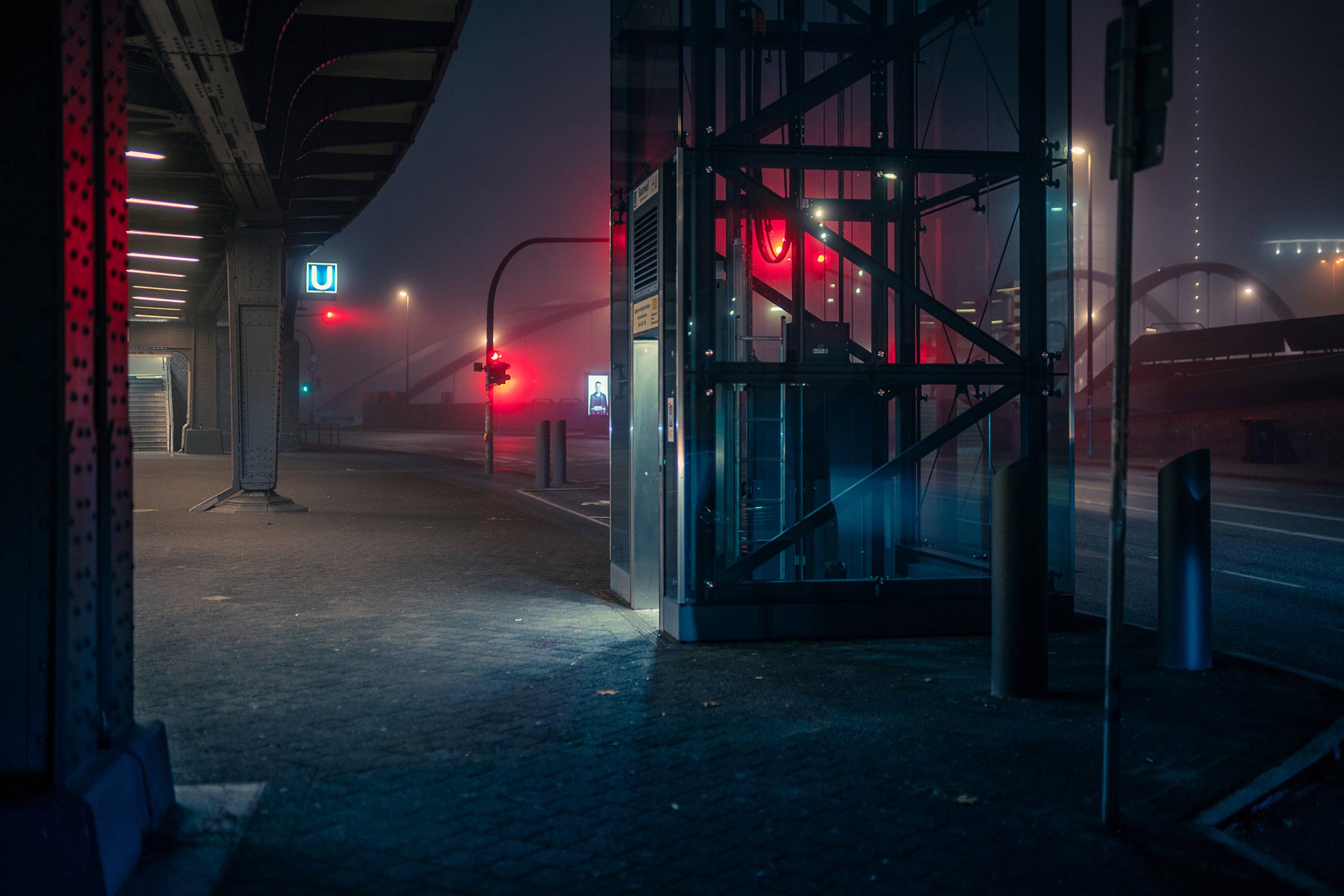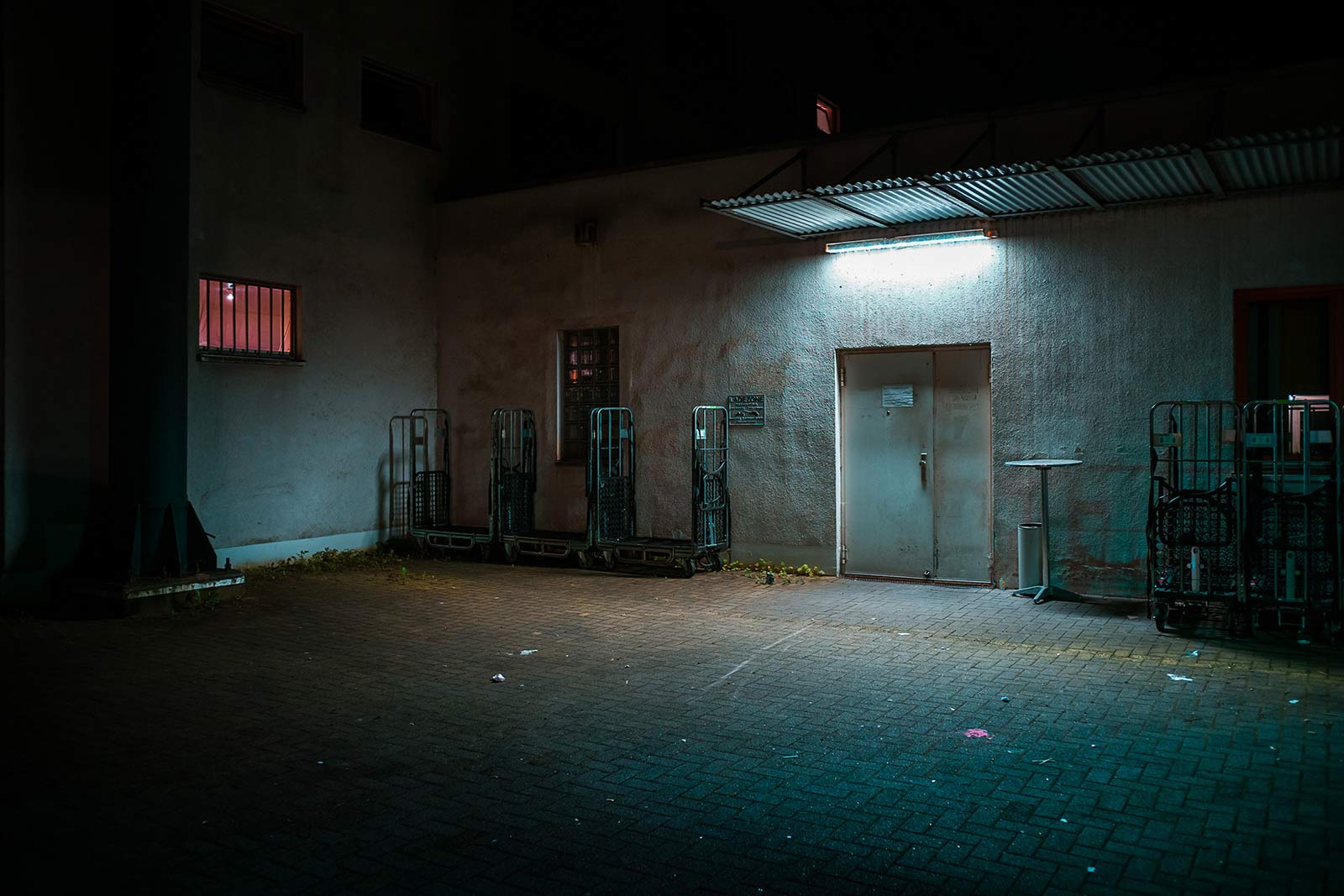
Mark Broyer
12 May 2021
Mark Broyer is photographer that specialises in capturing urban decay in his hometown of Hamburg. His work combines vivid lighting, weather-induced atmosphere and cinematic colour-grading to capture everyday streets in all their imperfect glory.
What's your backstory?
I am a freelance graphic designer and live in Hamburg with my wife and two sons. I've always dreamed of becoming a musician and invested a lot of time, but to be honest I wasn't good enough. Still, it was fun.

How did you first start out in photography?
After my band broke up, I was looking for something new. I always had a passion for photography, but more as an observer. Then I saw an exhibition by Lee Friedlander called "America by Car". I loved the simplicity and persistence. And it motivated me to pick up a camera myself.
I invested in better equipment and started taking photos all the time. Nothing in particular and with no intention of publishing anything. After a while, I tried to shoot with a bit of a concept, which was much more fun.
How would you describe your style?
Highly motivated location scout for a movie that will never be shot.
What inspires you?
The greatest source of inspiration for me are movies. Therefore, my goal is usually to make my photos look like scenes from a film. The moment before the actors enter the set. And of course from other photographers, known and unknown alike.
What subjects do you like to shoot?
I always look for the cinematic moment in ordinary and deserted places. I try to show our impact on our surroundings, the scars of time, without showing people. And since the face of a place sometimes changes dramatically at night, I like to shoot when it's dark. The night exaggerates!
I'm always looking for colour and available light. I look for motifs with different light sources in one place. And the places should tell a story, so I look for the imperfect and signs of decay.
Are you an impulsive or planned shooter?
I look for new places in advance and plan my time for photography. But on location, I let myself drift and take photos more impulsively. Some days I take very few photos, while on other days I take 100. And there have been days when I didn't take any photos at all because nothing inspired me.
And then there is the weather. When fog rolls in at night, you have to be spontaneous. Since it rarely occurs in my hometown of Hamburg.
Do you ever feel nervous for your safety shooting at night?
Not yet. I try to be as inconspicuous as possible so that I don't disturb other people. But I never feel insecure.
Equipment
How do you achieve the look in your photos?
Since I don't use a tripod, I usually shoot wide open with a combination of an exposure time that I can just about shoot handheld and the lowest possible ISO. In daylight, of course, it's something completely different.
I use Lightroom for post-processing. Mainly colour adjustment. I try not to spend so much time on post-processing. Nevertheless, I see this process as a very important part of my photography.
How do you feel your style has changed/evolved over the years?
The ratio of photos taken to good photos has improved, because over time I have developed a feeling for whether the photo will be good before I press the shutter button. Normally I know if I have a good photo when I don't check the display after taking the shot. And it's usually the photos that require the least work in post-processing.
In terms of style, I think I've become a little more subtle in terms of colour.
Can you tell us a bit more about your project After Hours?
It has been a bit of a coincidence. After I became a father for the first time, I simply didn't have the time for photography during the day besides work and family. But I had time in the evening!
In the beginning, I actually only went out to test a new lens, only to quickly realise how much fun it is to take pictures at night. At the same time, I was impressed by Wim Wenders' photo project "Places, strange and quiet". That's how it all came together.
You also produce moving images. Can you elaborate on this project?
Everyone interprets a still image differently. With the moving images, I try to convey a little more of my own idea of the scenes. And it's just fun to work on it.
What does photography mean to you?
It is a way of doing something without restriction, rules and expectations. It is a meditative process and helps me to feel balanced and free.
What advice would you have for people getting into photography?
Persistence is the key. Do not overthink. It takes time. Have fun!
How has COVID-19 affected your photography?
Since my wife and I both work full time as self-employed and both children have been at home for months, my photos have fallen to the back of the priority list. Currently we even have a curfew in the evenings, which makes it impossible for me to take photos. But it will all be over sooner or later. I'm really looking forward to it.
What are your thoughts on Instagram as a photography platform?
It's a good source of inspiration and it keeps me productive. However, it can also be stressful, which in the worst case can take the fun out of it. Unfortunately, I'm not immune to likes either, so I like the idea of removing this feature completely.
What are some of your hobbies outside of photography?
Running. It's very important for me to clear my head and to be balanced.
Thank you for taking the time to speak to us Mark. Any final comments?
Thank you so much, I am honoured to be part of this collection! It motivates me a lot to keep going.
Artist Links
Help support Fading Hours
We are a small independent photography magazine, founded in 2021, with a passion for helping amazing low-light photographers increase their exposure. Please consider donating a small amount using the button below, to help with supporting the website and its associated running costs. Your support is greatly appreciated - thank you!